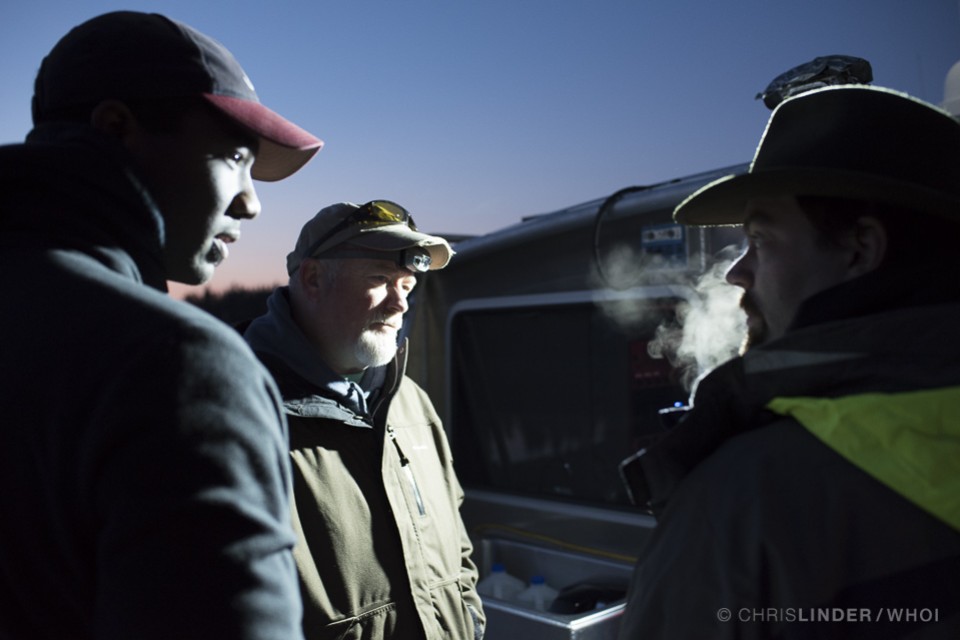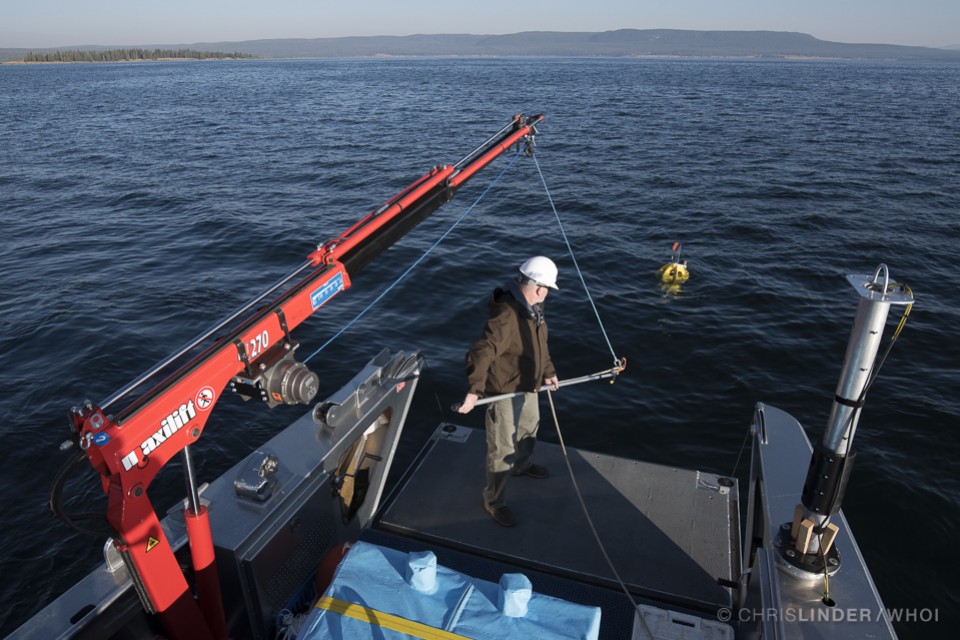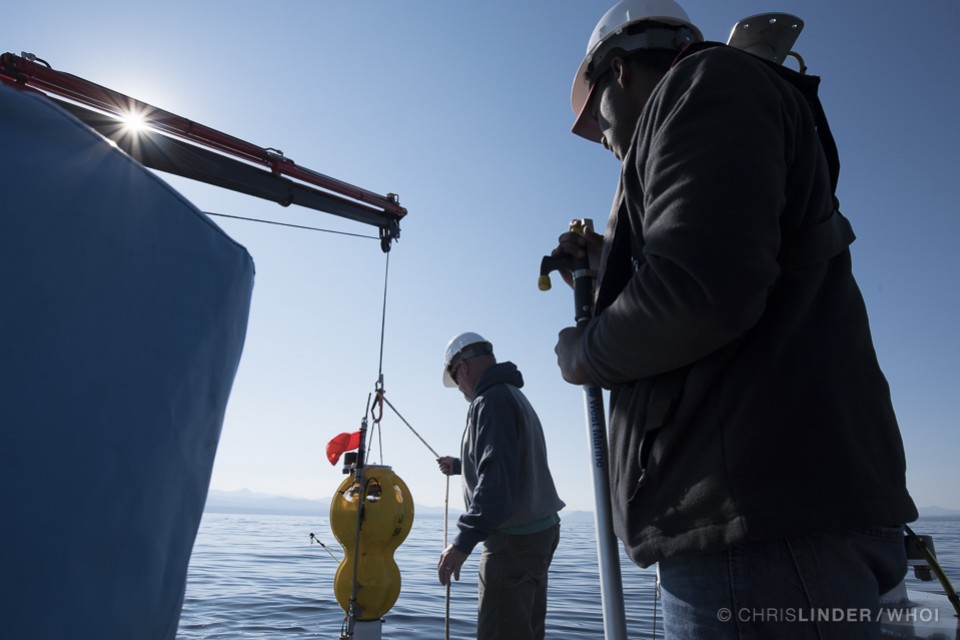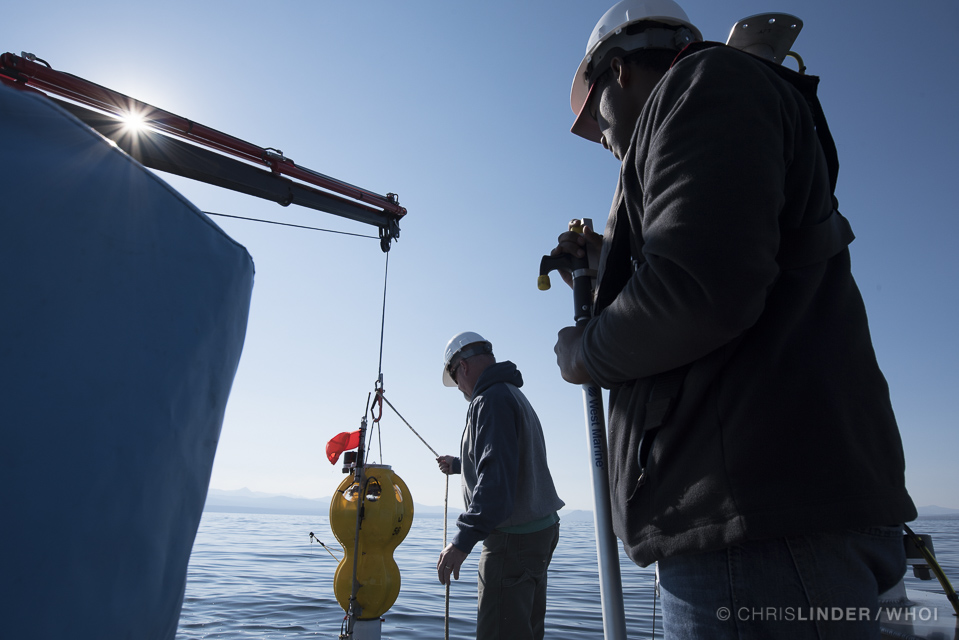Back in July, we deployed two seismometers in Yellowstone Lake in order to get preliminary information regarding the noise levels and seismicity rates on the lake floor in our study area. Today, we went out aboard the Annie to pick them up, and recover their precious data. Photos by Chris Linder, WHOI. Work was completed under an authorized Yellowstone Research Permit.






Before sunrise, graduate student Paris Smalls and engineers Tim Kane and Alan Gardner from the Woods Hole Oceanographic Institution discuss the plan to retrieve the seismometers from the bottom of the lake. Work was completed under an authorized Yellowstone Research Permit.
Dave Lovalvo, captain of the research vessel Annie, pilots the team to the spot where the instruments were deployed in July. Work was completed under an authorized Yellowstone Research Permit.
Tim Kane "talks" to the seismometer and tells it to come home. The instrument releases a pop-up buoy for recovery when it receives a series of coded commands using sound waves. Work was completed under an authorized Yellowstone Research Permit.
After the instrument receives the commands from Tim, the buoy is released and floats up to the surface. The anchor is still attached to the buoy through a nylon line—nothing will be left behind on the bottom of the lake. Work was completed under an authorized Yellowstone Research Permit.
The crew uses a small crane to pick up the roughly 100-pound instrument and gently place it on the deck. Work was completed under an authorized Yellowstone Research Permit.
Paris Smalls prepares to hook the line to pull up the anchor on the second seismometer. Paris will use the data from these instruments to understand how much seismic noise is on the lake floor and how often there are small earthquakes inside the HD-YLAKE study area. These are important pieces of information for determining where seismometers should be located next year when our full network (10 seismometers) is deployed. Work was completed under an authorized Yellowstone Research Permit.




